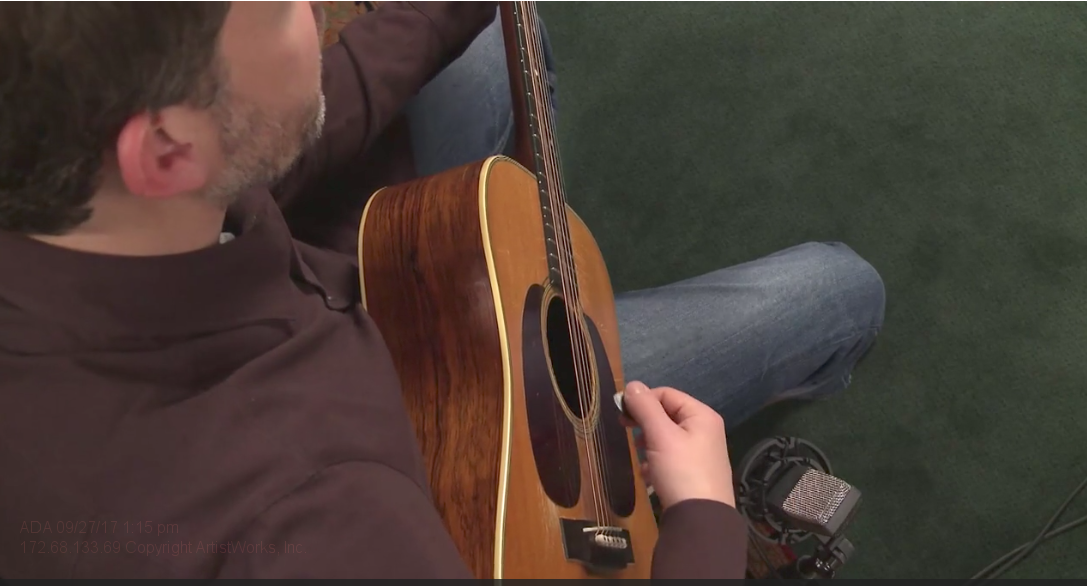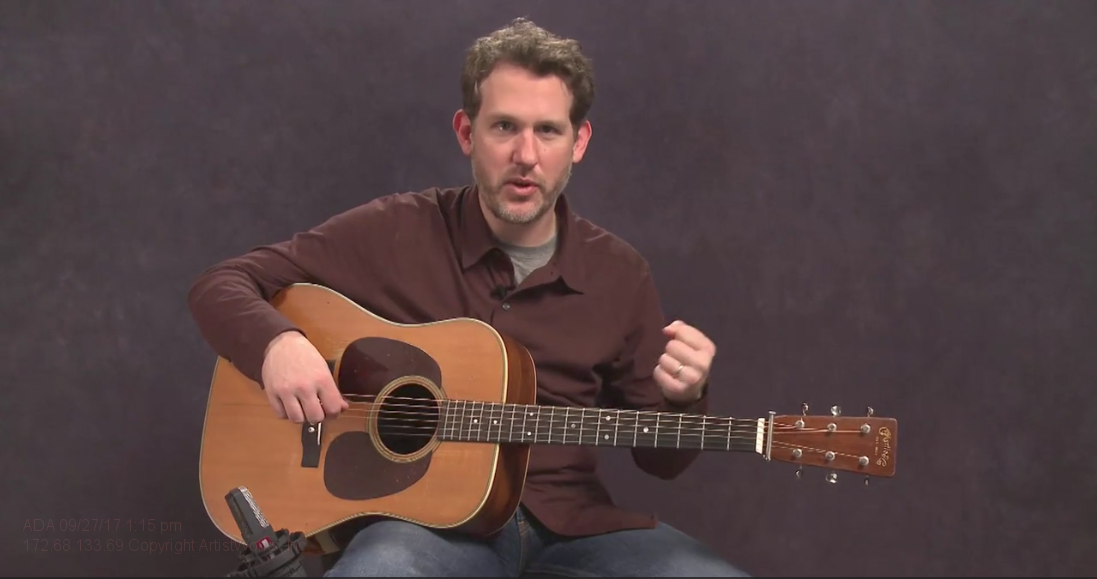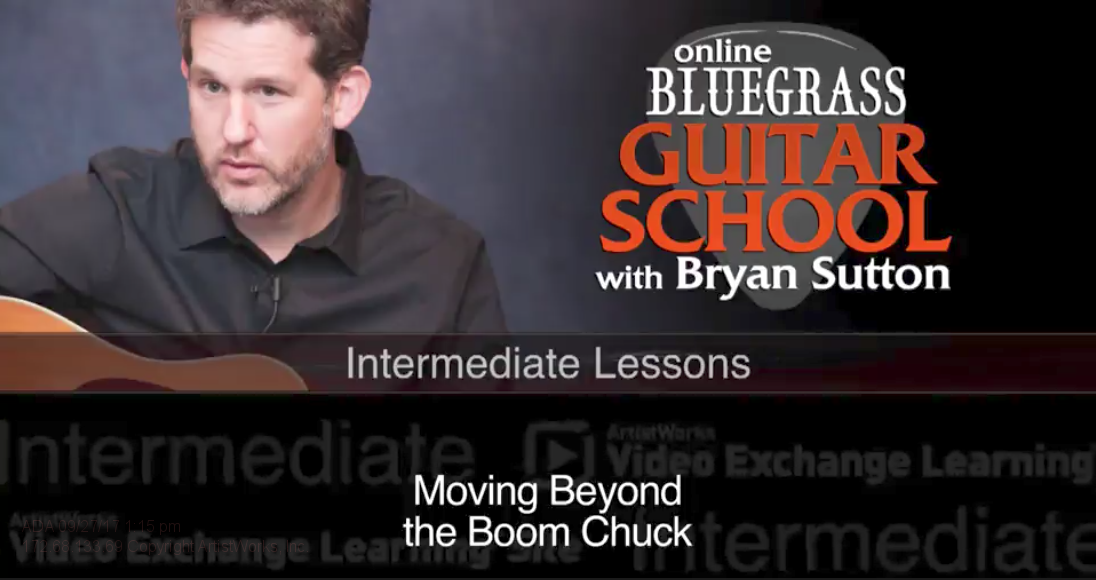Bluegrass Guitar: Moving Beyond the Boom Chuck

If you’ve ever dabbled in bluegrass guitar, you’ve probably heard of the boom chuck and alternating bass strumming patterns. Today we’re going to learn what these foundational techniques are and how to transform them into a more elaborate and colorful bluegrass rhythm style.
‘Boom Chuck’ Technique
The basic boom chuck pattern is typically done with four consecutive downstrokes. On beats 1 and 3, we only play the bass note, and on beats 2 and 4, we only strum the treble strings. In other words, the single bass notes on beats 1 and 3 are the “booms” and the treble strums on beats 2 and 4 are the “chucks”.
To get the hang of this technique, begin by choosing a chord with open strings, such as G major, and practice isolating the bass note on the low E string, strumming only the treble strings on beats 2 and 4. Once you can do this consistently, you’re ready to incorporate alternating bass.
Alternating Bass Technique
Using the same G major chord, we’re going to alternate the lowest two bass notes of the chord on beats 1 and 3. The result is that beat 1 will be a ‘boom’ on the low E string, 3rd fret (the note ‘G’), beat 2 will be a ‘chuck’ on the treble strings, beat 3 will be a ‘boom’ on the A string, 2nd fret (the note ‘B’) and beat 4 will be a ‘chuck’ on the treble strings.
When executed with a solid downbeat and emphasis on the proper notes, coupling alternating bass and boom chuck technique should sound like two guitars - one playing bass and one playing rhythm.

Creating Forward Drive
To create the characteristic forward drive of bluegrass rhythm guitar, we only need to add a few 8th note strums at the end of the bar (between beats 3 and 4). The rhythm can be counted as “1, 2, 3 and 4 and, 1, 2, 3 and 4 and”, etc. In this example, “3 and 4 and” represents four consecutive eighth note strums, alternating down-up, down-up.
If you prefer to count this rhythm solely by verbalizing the strum direction, it is ordered as follows: “down, down, down-up, down-up”.
Quick tip: Before moving on, remember to incorporate alternate bass notes with the strumming rhythm shown above. Once you’ve mastered that, add swing 8ths to really bring things to life. This will add depth and drive to your rhythm playing.
The Importance of the Downbeat
The downbeat is the heart and soul of country and bluegrass guitar, occurring on the strongest beats, 1 and 3. Practice the basic boom chuck and alternating bass patterns as much as necessary before adding additional 8th note strums, as an unwavering downbeat is crucial to rock-solid bluegrass guitar.

Notice that even when more advanced strumming is applied (such as swing 8ths with alternating bass), the music only has “swing” insofar as the downbeat is solid. Lose the downbeat, and you lose the pulse of the music.
Developing Feel and Nuance
The only way to truly develop feel and nuance in your playing is through repetition and experimentation. There are no hard and fast rules that say “in Blue Moon In Kentucky you always do this” or “in Temperance Reel you always play this”. In this regard, your musical intuition should be your ultimate guide.
That being said, a good starting point is to practice matching your rhythm playing to that of your favorite artists and songs, as this will make the process more enjoyable while also providing an objective goal to strive for.
Good luck, and happy picking!

Ready to take your bluegrass guitar playing to the next level? Click here for free sample lessons!
Related Blogs:







Comments